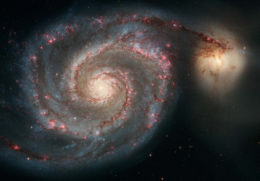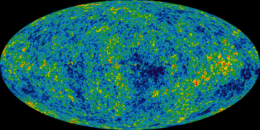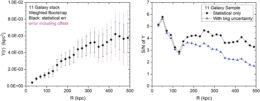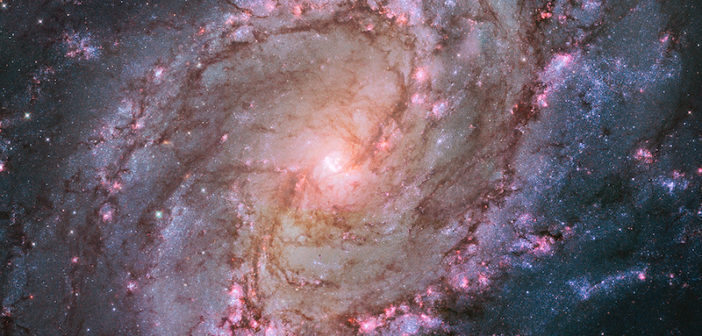Many galaxies seem to have far less visible matter than expected. In a new article, astronomers have taken the search for missing matter to the outskirts of spiral galaxies.
Mysterious Matter

Messier 51, the Whirlpool Galaxy, is one of the many recognizable galaxies investigated in this work. The galactic halos studied in this article likely extend hundreds of thousands of light-years into space — far larger than the galaxies’ starry disks. Messier 51’s disk is 76,000 light-years in diameter. [NASA, ESA, S. Beckwith (STScI) and the Hubble Heritage Team (STScI/AURA)]
Where might this missing matter be hiding? One possibility is that much of the mass of galaxies lies in extended halos that stretch hundreds of thousands of light-years beyond the bright, starry regions that make up the main body of a galaxy. This gas is difficult to detect because of its low density and interference from intervening gas within our own galaxy. How, then, can we weigh this halo gas?

A map of temperature fluctuations in the cosmic microwave background from WMAP. This map shows temperature deviations of up to 200 microkelvin. [NASA]
A Sunyaev–Zeldovich Stack
A team led by Joel Bregman (University of Michigan) searched for missing matter in galactic halos by looking for evidence of the Sunyaev–Zeldovich effect — the process through which low-energy photons from the cosmic microwave background are kicked up to higher energies through interactions with extremely hot gas. The magnitude of this effect is proportional to the mass and temperature of the gas, making it a useful probe of hot, diffuse halos that might otherwise be impossible to spot.
Bregman and collaborators used this method to investigate the halos around 12 spiral galaxies located 10–33 million light-years away — close enough to determine the spatial extent of the hot halo gas. Most of the halos were too faint to be detected individually, so the team stacked the observations from 11 of the 12 galaxies (one galaxy showed significant differences and was analyzed separately) to extract a signal and determine the average properties of the galaxies in the sample.
Luminous Matter at Large

The integrated Sunyaev–Zeldovich signal from the stack of 11 galaxies as a function of radius (left) and the signal to noise ratio (right). Click to enlarge. [Bregman et al. 2022]
In order to search for gas even farther out, the team hopes to stack observations from more galaxies and develop new algorithms to reduce uncertainties. Proposed cosmic microwave background detectors like the Probe of Inflation and Cosmic Origins may also aid the search for missing matter, helping us understand where present-day galaxies hide their mass.
Citation
“Hot Extended Galaxy Halos around Local L* Galaxies from Sunyaev–Zeldovich Measurements,” Joel N. Bregman et al 2022 ApJ 928 14. doi:10.3847/1538-4357/ac51de
